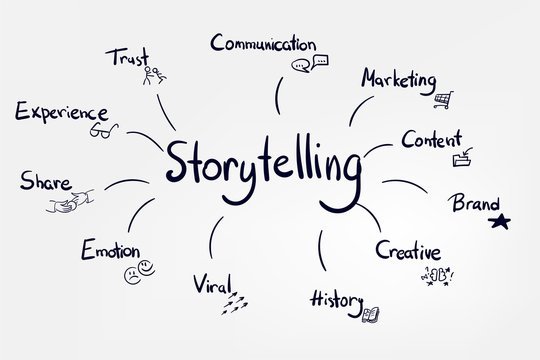
Storytelling is a powerful tool in video advertising that goes beyond simply showcasing a product or service. It involves crafting a narrative that resonates with viewers on an emotional level, creating a memorable and impactful experience. Effective storytelling in video ads not only captures attention but also drives engagement and conversions. Here’s how storytelling enhances video ads and how you can leverage it to create compelling content.
1. The Power of Narrative
Emotional Connection
Building Empathy: Stories have the ability to evoke emotions and create a connection with the audience. By telling a relatable story, you can make your audience feel understood and valued.
- Emotional Appeal: Use narratives that address common problems or desires to resonate emotionally with your viewers.
- Relatable Characters: Introduce characters or scenarios that your target audience can relate to or empathize with.
Memorability: A well-told story is more memorable than a straightforward sales pitch. It helps viewers recall your brand and message long after the ad has ended.
- Retention: Stories that evoke strong emotions are more likely to stick with viewers, enhancing brand recall.
Engagement and Interest
Captivating Content: Storytelling can transform a simple advertisement into a captivating narrative that holds viewers’ attention.
- Plot Development: Create a narrative arc with a clear beginning, middle, and end to keep viewers engaged.
- Conflict and Resolution: Incorporate conflict or challenges that are resolved by your product or service, providing a satisfying conclusion.
Viewer Investment: Engaging stories encourage viewers to watch the ad until the end, increasing the likelihood of message retention and action.
- Continuous Engagement: Keep viewers invested in the narrative to ensure they stay engaged with your ad.

The Role of Storytelling in Effective Video Ads
2. Crafting Compelling Stories
Define Your Message
Clear Objectives: Before crafting your story, define the core message you want to convey and the key takeaway for viewers.
- Focus on Benefits: Highlight how your product or service solves a problem or enhances the viewer’s life.
- Core Message: Ensure that your story aligns with your brand’s values and goals.
Story Arc: Develop a clear story arc that guides viewers through a coherent narrative.
- Introduction: Set the scene and introduce the main characters or scenario.
- Conflict: Present a challenge or problem that needs to be addressed.
- Resolution: Show how your product or service provides a solution and delivers value.
Use Visual and Emotional Elements
Visual Storytelling: Leverage visuals to enhance your narrative and convey emotions effectively.
- Imagery: Use compelling visuals that support and enhance the story you’re telling.
- Cinematography: Employ creative cinematography techniques to capture attention and convey your message.
Emotional Resonance: Integrate emotional elements that resonate with your audience’s experiences or aspirations.
- Music and Sound: Use music and sound effects to evoke specific emotions and complement the visual narrative.
- Voiceovers and Dialogues: Incorporate voiceovers or dialogues that add depth to the story and connect with viewers on a personal level.
3. Aligning Storytelling with Brand Goals
Brand Integration
Seamless Integration: Ensure that your story integrates naturally with your brand message and goals without overshadowing the narrative.
- Brand Placement: Position your brand or product within the story in a way that feels organic and relevant.
- Subtle Messaging: Avoid overt sales pitches and focus on delivering value through the narrative.
Consistent Branding: Maintain consistency with your brand’s identity and values throughout the story.
- Brand Voice: Use a tone and style that aligns with your brand’s voice and persona.
- Visual Consistency: Incorporate brand elements such as colors, logos, and fonts to reinforce brand recognition.
Call to Action
Effective CTAs: Include a clear and compelling call to action that aligns with the story and encourages viewers to take the next step.
- Actionable Steps: Clearly state what you want viewers to do after watching the ad, whether it’s visiting your website, signing up for a newsletter, or making a purchase.
- Reinforce Message: Ensure that the CTA reinforces the narrative and provides a logical next step for viewers.
4. Evaluating and Refining Your Approach
Performance Metrics
Track Engagement: Monitor engagement metrics such as view count, watch time, and interactions to gauge the effectiveness of your storytelling.
- Audience Feedback: Collect feedback from viewers to understand how the story resonated with them and identify areas for improvement.
- Conversion Rates: Measure conversion rates to assess how well your story drives desired actions.
Refine Based on Insights: Use performance data to refine your storytelling approach and enhance future video ads.
- Content Adjustments: Make adjustments to the narrative, visuals, or CTAs based on feedback and performance metrics.
- Continuous Improvement: Continuously test and optimize your storytelling strategies to improve engagement and conversions.
Conclusion
Storytelling is a crucial element in creating effective video ads that captivate audiences, drive engagement, and achieve conversion goals. By crafting compelling narratives, integrating emotional and visual elements, aligning with brand goals, and continuously evaluating performance, you can harness the power of storytelling to make your video ads more impactful and memorable. Embrace storytelling to elevate your video advertising strategy and connect with your audience in a meaningful way.
